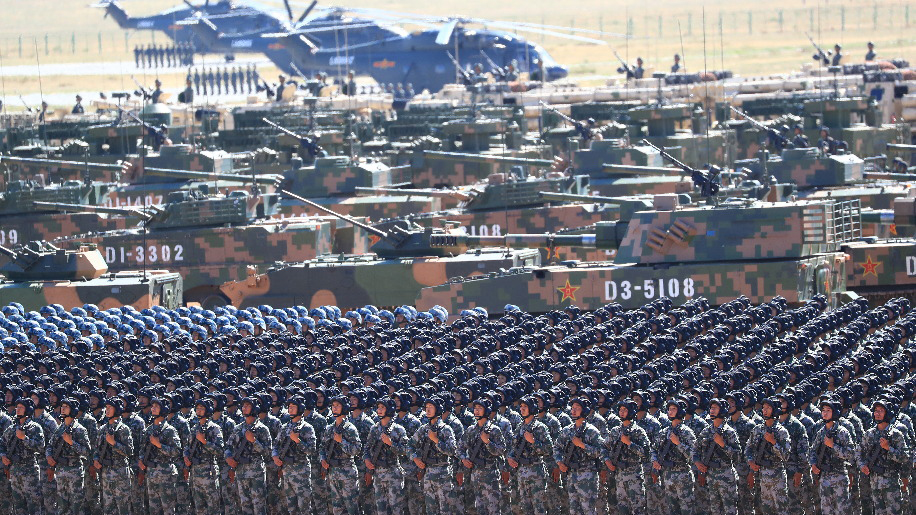Published: October 05,2022
By Staff writer

When Xi became the president of China and commander in chief of the People’s Liberation Army (PLA), in 2013, he accelerated military reforms that were began in the 1990s by Jiang Zemin who served as the president President of the People’s Republic of China between 1993–2003. China’s military spending rose by 83% in real terms between 2009 and 2018, by far the largest growth attained in any big country. Xi Jinping wants China’s armed forces to be “world-class” by 2050.
Xi Jinping Thought on Strengthening the Military has made it clear that pursuing reform and encouraging innovation are key to military’s strength. Xi has repeatedly stressed the role of science, technology and innovation in the Chinese military. In November 2013, a plenary session of the CPC Central Committee declared a formal decision to undertake massive military reform.
Four months later, the Central Military Commission established a group under Xi’s leadership tasked with drawing up a road map for the reform and guiding its implementation. This marked the first time that the Party’s general secretary had personally headed an authority dealing with reform of the national defense system and the military. To prepare for the reform, Xi presided over two plenary meetings of the Political Bureau of the CPC Central Committee to listen to experts’ thoughts, research findings and suggestions. Xi also convened three meetings of the Central Military Commission’s reform leadership group to solicit and discuss ideas and advice from top PLA authorities, service headquarters, regional commands and research bodies. Moreover, the commander-in-chief personally arranged the research and making of major reform policies.
In October 2020, while addressing an event commemorating the 70th anniversary of Chinese People’s Volunteers (CPV) army entering the battlefield in the War to Resist U.S. Aggression and Aid Korea (1950-1953), President Xi Jinping said that China must turn itself into a modernized power and build a world-class army, as a strong military can provide “strategic support” to the country’s national rejuvenation. “The world faces the challenges of unilateralism, protectionism and hegemonism, and people from all countries should work together and defend multilateralism, peaceful development and win-win cooperation,” Xi said.
During Xi administration, China has built the world’s largest navy, revamped the world’s biggest standing army, boasts of nuclear and ballistic missiles. China military capabilities advanced from the weak position to one of the best globally. At the fifth session of the 13th National People’s Congress in early March, the Chinese government announced a defense budget of 1.45 trillion yuan (about $229 billion) for fiscal year 2022, which is a 7.1 percent year-on-year increase from 2021.
China has moved up in the global defense spending rankings, and is now second only to the United States in expenditures. In the Indo-Pacific region, China’s military spending increasingly dwarfs that of its neighbors. For example, China now spends more on its military than Japan, South Korea, the Philippines, and India combined (Stockholm International Peace Research Institute [SIPRI], April 2021). For instance, at $229 billion, China’s military spending is three times that of India’s $70 billion figure for 2022, according to military spending reports.
“All the key players in the Indo-Pacific region are responding to China’s military modernization, basically as fast as they can,” said Malcolm Davis, a formerAustralian defence official currently with the Australian Strategic Policy Institute. Today, China boasts two active aircraft carriers, hundreds of long- and intermediate-range ballistic missiles, thousands of warplanes and a navy surpassing that of the United States. “They have a very large navy, and if they want to bully and put ships around Taiwan, they very much can do that,” US Seventh Fleet commander Karl Thomas told media.
“The PRC is the only competitor capable of combining its economic, diplomatic, military, and technological power to mount a sustained challenge to a stable and open international system,” a Pentagon report pointed out last year. This has created panic within the US administration and military strategists as they translate China’s military capabilities in terms of reshaping the international order and of course, the fear of losing its hegemony on the world stage.
 Africa -China Review Africa -China Cooperation and Transformation
Africa -China Review Africa -China Cooperation and Transformation
